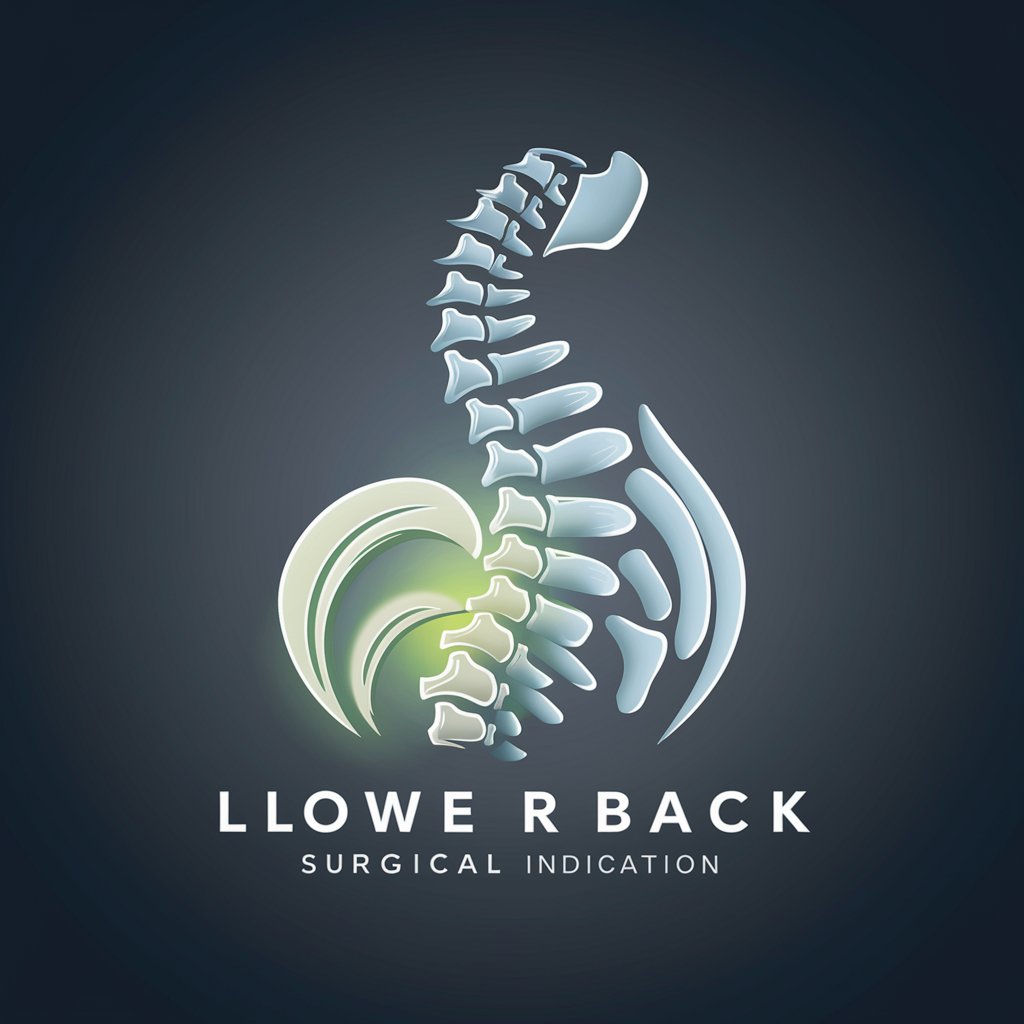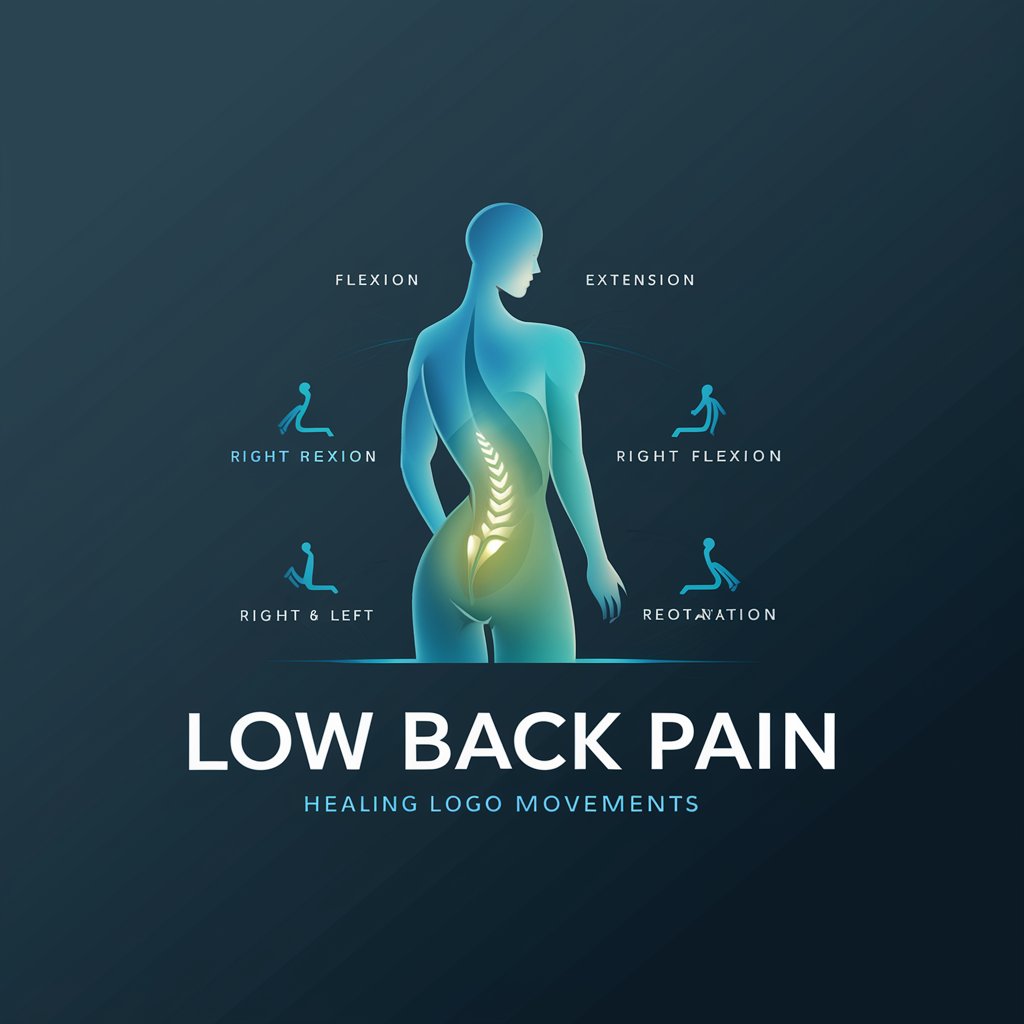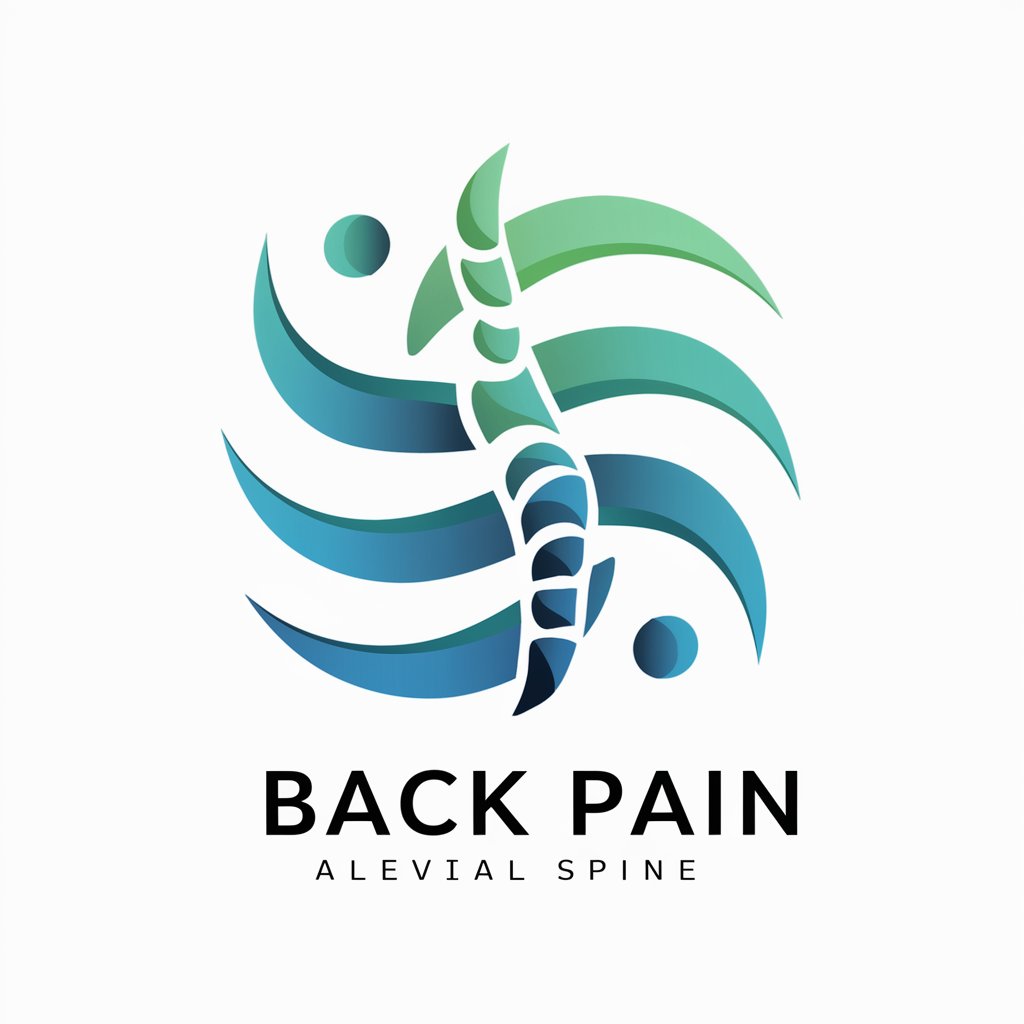
Surgical Indications for Low Back Pain - Low Back Pain Surgery Guide

Welcome! Let's discuss surgical indications for low back pain.
Empowering surgical decision-making with AI
Explain the surgical indications for...
What are the non-surgical treatment options for...
Describe how spinal adaptation can help...
When should someone consider surgery for...
Get Embed Code
Understanding Surgical Indications for Low Back Pain
Surgical Indications for Low Back Pain is designed to navigate the complex decision-making process surrounding the need for surgery in cases of chronic or severe low back pain. This specialized area of knowledge focuses on identifying when surgical intervention is necessary as opposed to when non-surgical treatments may be more appropriate. It emphasizes the understanding of spinal anatomy, the nature of the patient's back pain, and the potential benefits and risks associated with surgical procedures. For example, a patient with low back pain persisting beyond 6 months, showing signs of nerve damage (e.g., numbness, weakness in the legs), and not responding to conservative treatments might be considered for surgical evaluation. Conversely, a patient experiencing mild to moderate pain without neurological symptoms may benefit from physical therapy, medications, and lifestyle modifications instead. Powered by ChatGPT-4o。

Core Functions of Surgical Indications for Low Back Pain
Assessment and Diagnosis
Example
Analyzing MRI scans to identify herniated discs or spinal stenosis.
Scenario
A patient presents with radiating leg pain and lower back discomfort. An MRI reveals a herniated disc impinging on a nerve root, leading to a surgical indication for a discectomy after conservative measures have failed.
Guidance on Treatment Options
Example
Comparing the outcomes of spinal fusion vs. laminectomy for spinal stenosis.
Scenario
An individual suffering from spinal stenosis with significant lumbar instability may be guided towards spinal fusion surgery, while another with less instability might be better suited for a laminectomy, emphasizing tailored treatment approaches.
Risk-Benefit Analysis
Example
Evaluating the potential benefits of surgery against the risks and recovery time.
Scenario
For a patient considering lumbar fusion, a detailed discussion on the potential to alleviate pain and restore function is balanced against the risks of surgery and the comprehensive rehabilitation process.
Target Users of Surgical Indications for Low Back Pain Services
Healthcare Professionals
Doctors, especially spine specialists, and physical therapists can utilize this knowledge to better assess their patients' conditions, offering informed recommendations regarding surgical options or alternatives based on the latest guidelines and research.
Patients with Chronic Low Back Pain
Individuals suffering from persistent low back pain, who have not found relief through conventional treatments, may use this information to understand their surgical options, prepare questions for their healthcare providers, and make informed decisions about their treatment plans.
Medical Researchers and Students
This group benefits from an in-depth understanding of surgical indications to contribute to ongoing research, educational pursuits, and clinical training, ensuring future healthcare professionals are well-versed in modern practices for treating low back pain.

How to Use Surgical Indications for Low Back Pain
1
Start your journey at yeschat.ai to access a complimentary trial, no login or ChatGPT Plus required.
2
Identify your specific needs or questions related to low back pain to tailor your experience.
3
Utilize the tool to explore surgical indications, integrating your clinical knowledge and patient scenarios.
4
Review the provided evidence-based guidelines and recent studies to support your understanding.
5
Apply the insights gained to enhance your clinical decision-making or to inform your understanding of low back pain treatment options.
Try other advanced and practical GPTs
Yum Yum Gluten Check
Detect gluten with AI precision

CONTRAINDICATIONSmap🌟🌈💪
Navigate health safely with AI-powered contraindication data.

'A Vindication of the Rights of Woman'
Revolutionize Reading with AI

HAKSELAARmap
Empowering Harvesting with AI Diagnosis

VELDSPUITmap
Streamline Sprayer Repairs with AI

The Cuban Missile Crisis Expert (1962)
Decoding Cold War Dynamics with AI

Tariff Finder EAC
Streamlining EAC Trade with AI

AROMAster
Empowering Natural Health with AI

The Economics Observer
Empowering Decisions with AI-Driven Economics

Witty Observer AI
Enhance Every Interaction with AI Wit

Script Builder
Elevate Your Sales with AI-Powered Scripting

Door-to-Door Salesperson
Revolutionizing door-to-door sales with AI

Detailed Q&A on Surgical Indications for Low Back Pain
What factors determine the need for surgery in low back pain cases?
Surgical indications for low back pain include intractable pain, significant neurological deficits, and structural abnormalities like herniated discs or spinal stenosis, confirmed by imaging studies. Patient-specific factors, such as overall health and response to conservative treatments, also play a crucial role.
How does this tool assist in understanding surgical options for low back pain?
The tool offers up-to-date, evidence-based information, aiding users in exploring various surgical indications, understanding the risks and benefits of different procedures, and providing a framework for discussing potential surgical options with healthcare providers.
Can non-healthcare professionals use this tool for educational purposes?
Yes, while the tool is designed with healthcare professionals in mind, it also serves an educational purpose for non-professionals interested in learning about low back pain surgical indications, promoting a deeper understanding of when and why surgery might be considered.
How does the tool stay current with the latest research and guidelines?
The tool is regularly updated to reflect the latest research findings, clinical guidelines, and best practices in the management of low back pain, ensuring users have access to current and relevant information.
Is there a feature to interact with experts or get personalized advice?
While the tool provides comprehensive information and guidelines, it does not replace personalized medical advice. Users are encouraged to consult with healthcare professionals for individualized recommendations and decisions regarding surgery.





